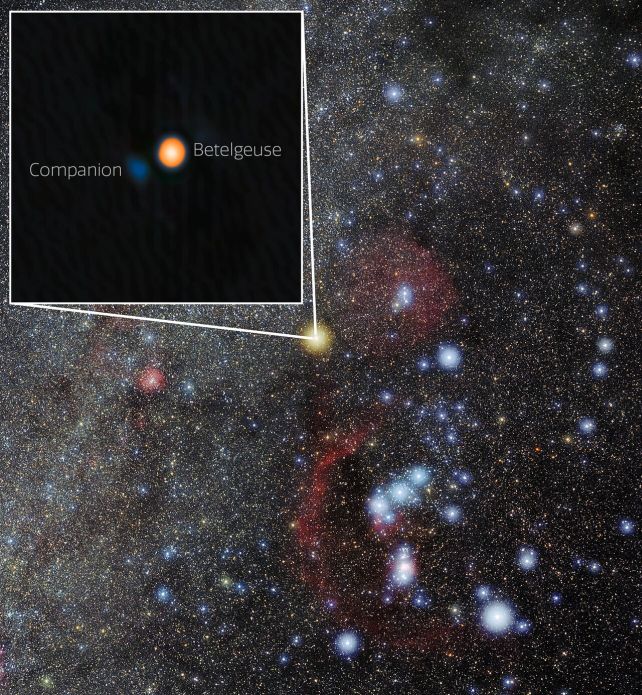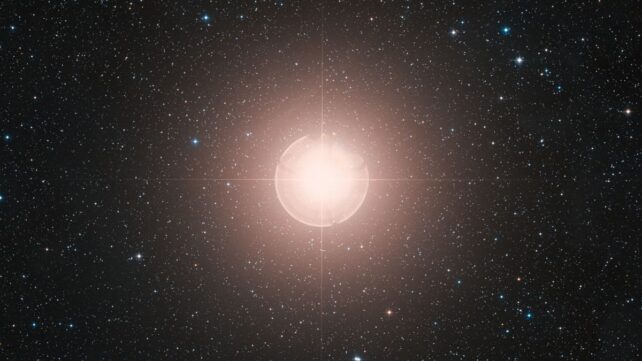The small, furtive companion of one of the brightest stars in Earth's night sky has just turned out to be something no one suspected.
Instead of being the kind of object astronomers expected to find orbiting mega-weirdo Betelgeuse, the binary companion appears to be a young, Sun-like star. This discovery offers a new window into the troubled star's mysterious past.
"It could have been a white dwarf. It could have been a neutron star. And those are very, very different objects," says astrophysicist Anna O'Grady of Carnegie Mellon University in the US. "If it was one of those objects, it would point to a very different evolutionary history for the system."
Related: It's Official: Betelgeuse Has a Binary 'Twin', And It's Already Doomed

Betelgeuse, a red supergiant star thought to be about 548 light-years away in the constellation of Orion, has long been a bit of a puzzle to astronomers. It's a bloated beast at the end of its lifespan, clocking in at a mass somewhere between 16.5 and 19 times that of our Sun, but a radius of around 764 times the Sun's.
One enduring mystery is its brightness fluctuations. It brightens and dims on several cycles, one of which seemed consistent with a binary companion on a likely six-year orbit suggested by Betelgeuse's repeating pattern.
This orbit, scientists calculated, would place the companion at an ideal observing position in December 2024. So, at that time, several telescopes pointed at the star to see if a companion revealed itself.
The resulting gamut of images revealed the companion, officially designated α Ori B and nicknamed Siwarha, for the first time.
During that flurry of observations, X-ray images were taken using the Chandra X-ray Observatory. If the object were a white dwarf or neutron star, it should emit X-radiation as it siphons material from its red giant companion.

O'Grady and her colleagues found no sign of X-rays in the Chandra data. Even assuming that the wind gusting out of Betelgeuse had obscured some of the X-rays, the non-detection rules out a white dwarf or neutron star. Instead, the researchers think Siwarha is a young F-type star possibly still settling into the main sequence.
If this is the case, both stars probably formed together about 10 million years ago; but, because more massive stars burn up their lifespans much more quickly than smaller ones, Betelgeuse is nearing the end of its days, while Siwarha's are yet to fully begin.
This, actually, is quite mind-boggling. When stars are born together, models suggest their masses should be closer to each other. The configuration of the Betelgeuse binary doesn't fit the playbook: Siwarha is around our Sun's size or smaller, dwarfed by its massive companion.
"This opens up a new regime of extreme mass ratio binaries," O'Grady says. "It's an area that hasn't been explored much because it's so difficult to find them or to even identify them like we were able to do with Betelgeuse."
The research has been published in The Astrophysical Journal.

